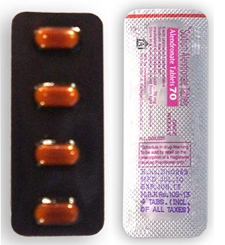|
Prevention of osteoporosis can often be achieved by targeting
those risk factors that a person has the ability to modify. The
best-known method of preventing osteoporosis is to consume the
recommended daily levels of Calcium and Vitamin D, as these two
minerals are vital for bone growth and maintenance. Adolescents up
to age 19 require 1,300 mg of Calcium each day, adults under age
50 need 1,000 mg of Calcium daily, and adults age 50 and over need
1,200 mg of daily Calcium. Adolescents and adults up to age 50
require 200 IU of daily Vitamin D, adults between age 50 and 70
require 400 IU of Vitamin D each day, and adults 71 years old and
over require 600 IU daily. Achieving the recommended levels of
Vitamin D and Calcium may require taking supplements, especially
if someone is home-bound, lives in a climate with little sun
exposure, or is taking medications that interfere with the body’s
ability to absorb calcium.
Other effective methods of preventing the onset of osteoporosis
include abstaining from smoking, getting sufficient exercise
without over-exerting yourself, and limiting alcohol and caffeine
intake. Persons that are already smokers may be able reduce their
risk of osteoporosis to the level of never-smokers by quitting
smoking. In women with estrogen deficiencies, mostly due to
menopause, hormone replacement therapy (HRT) is approved by the
FDA for osteoporosis prevention. However, due to the numerous
health risks of HRT, taking HRT only for the prevention of
osteoporosis is not recommended.
The American College of Physicians released guidelines in 2008,
recommending doctors offer medicine to patients with osteoporosis
and consider medicine for patients at risk for the disease. The
report noted that bisphosphonates are effective for treatment and
prevention, but that there is not actionable information on how
long people should take them.
Doctors sometimes prescribe 5 mg/day or alendronate for
patients they feel are at risk for osteoporosis.
|




